While the clock of life unremittingly ticks each decade into being with precision, what’s been lost — and what’s been gained — is not always apparent at the dawning of each new era.
“It takes us awhile after each decade, in a collective sense, to see the [societal] shifts, as we really do realize much more over time,” says Erin Dwyer, associate history professor, whose area of focus is the 19th century; she also has a special interest and expertise in material culture.
While major shifts in politics, science, technology and cultural and social norms are often robustly discussed between the decades, there has always been a silent, up-close-and-personal Visual to reflect societal change: what we wear.
Trending: fun fashion flashbacks
To highlight how America’s changing fashion sense touched OU’s campus, Dwyer examines on-campus photos of OU students over the past 60 years. She gives her insight of the times with fun facts, creating an interesting snapshot of where we’ve been — and where we are now.
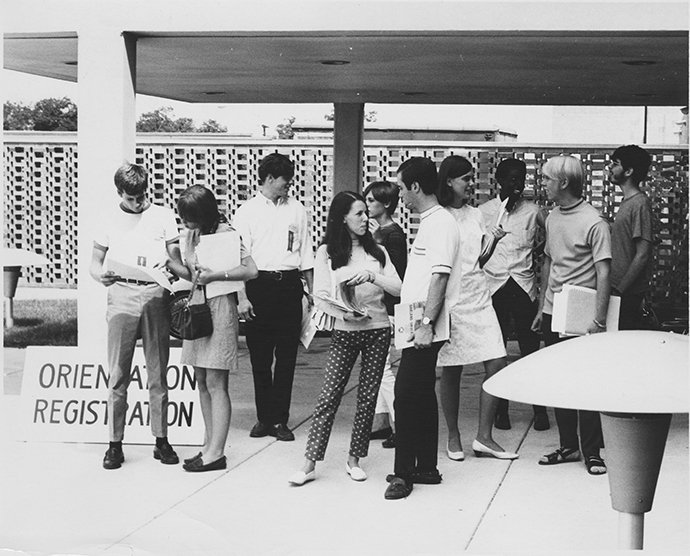 |
The ’60s: The long (skirt) goodbye — and who wears the pants now? Everyone!
The ’60s began with formality, and OU students refl ected that. The women were the picture of elegance, with their short bobs and perfectly put together pearl button sweaters and pencil skirts. “They had that Mamie Eisenhower look down, wow — such an effort, to be so formal [in class],” says Dwyer.
Not to be outdone, it was Mr. Rogers sweaters for the guys, with short hair gelled to perfection.
However formal the ’60s began, America’s youth culture continued to gain momentum. Students born after WWII began to separate from the opinions and ideas of their parents. For the ladies, their fashion sense led them to the wearing of mini skirts and pants. Pop culture was increasingly brought into the mainstream, with youth copying the clothing style of the Beatles, and cat eye (popularized by Marilyn Monroe) and Buddy Holly eyeglasses became the rage.
“Women wearing pants was empowering, as it brought continuity between the sexes. It was a fashion change that stuck and was present in the ’70s and on, so it was quite significant,” Dwyer says.“Although the most significant change in fashion definitely occurred from 1959-69, it had been brewing for some time,” says Dwyer. During WWII, while men were away fighting in the war, women had worked in factories to support their families. On-the-job, many donned men’s work trousers and that became freeing for them. The war’s fabric rations that brought about tight pencil skirts (and other constrictive clothing) began to make them feel “bound,” which brought a backlash of the free-flowing, looser skirts of the ’50s. The wearing of pants by women — something practical and comfortable and identical to men — burst forth, in full, by the late ’60s.
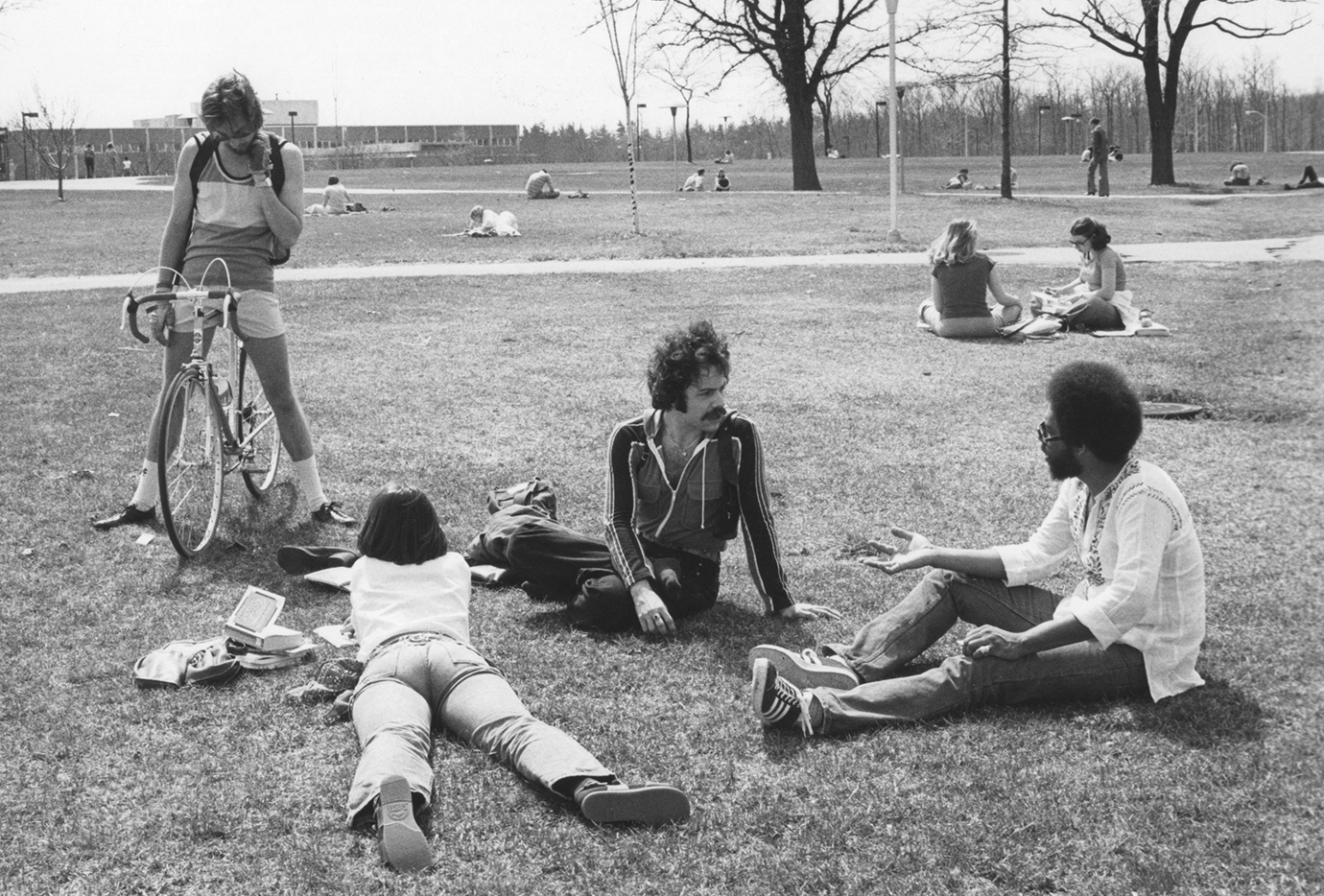 |
The ’70s: The Farrah flip
Free-spirited youth, exemplified by Woodstock in 1969, began to surface on college campuses.
“Although we don’t see dramatic hippie-long hair on the guys at OU, we do see their hair falling onto the nape of their neck, and we know that had to drive many fathers crazy,” laughs Dwyer.
The ’70s began with “nothing” being done with hair. “Then we see that natural turning into blown-out hair and the Farrah Fawcett look,” she says.
For the guys, the ’50s and ’60s Motown suit formality had been replaced by denim, untucked shirts, bell bottoms and afros.
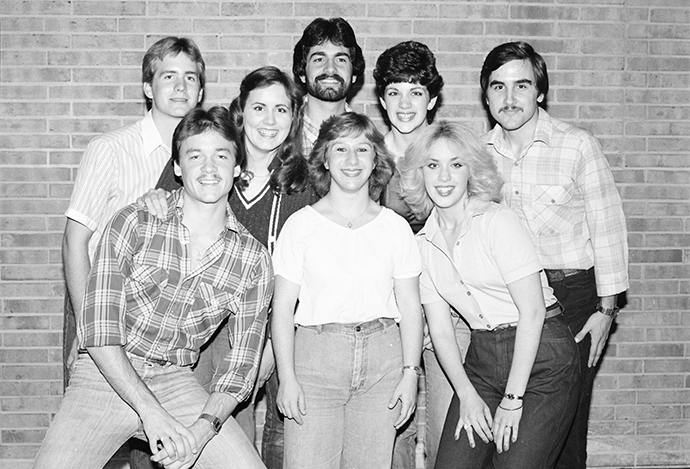 |
The 80's: Keeping it Casual
This was a decade that introduced athleisure wear in the form of relaxed and high-waisted jeans, ballooned pants, leggings and short shorts (for both sexes). Blown-out hair was the trend; it was permed or feathered (Princess Diana style) for the ladies and guys were showing a bit more facial hair.
 |
The ’90s: Bridging the GAP
The ’90s was a mishmash of styles including hoodies, “Grunge” and baggie pants. On campus, though, “It was mainly GAP clothing,” says Dwyer, with a lot of light-blue relaxed or fitted jeans and t-shirts.
 |
The 2000's: Boot cut, bombers and bears — oh my!
Tracksuits and sweats were in high demand. Dwyer says that graphic tees were plentiful due to the increase in logo licensing. Bell bottoms made a comeback, in the name of boot cut jeans. Bomber jackets emerged, harkening back to the ’50s. Shorts became longer and hoodies were still popular.
The 2010s: Lounging Around
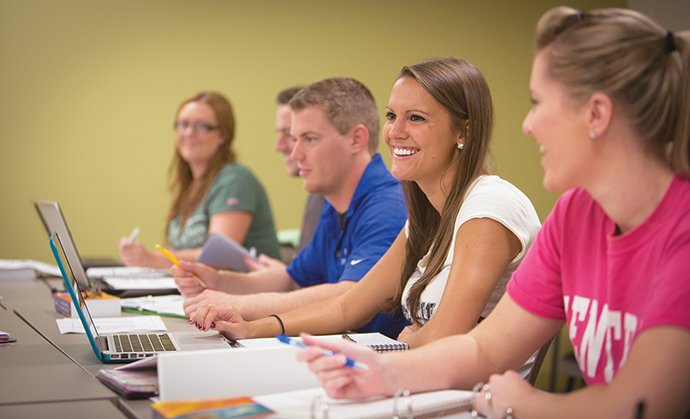 |
“Some of the professors did not take to the student attire in the 2010s. I remember hearing, ‘Do they really need to wear PJ pants and UGGs to class?’” chuckles Dwyer. Yes, athleisure had fully arrived, but it didn’t stay for long. Sweats and yoga pants still make appearances on campus, but it would be rare to find a student in pajama pants.”
That “blast-through-the-past” brings us to the 2020s.
“What will they be saying about our 2020 fashion, 20, 30, 50 years from now?” muses Dwyer, who believes she knows the answer.
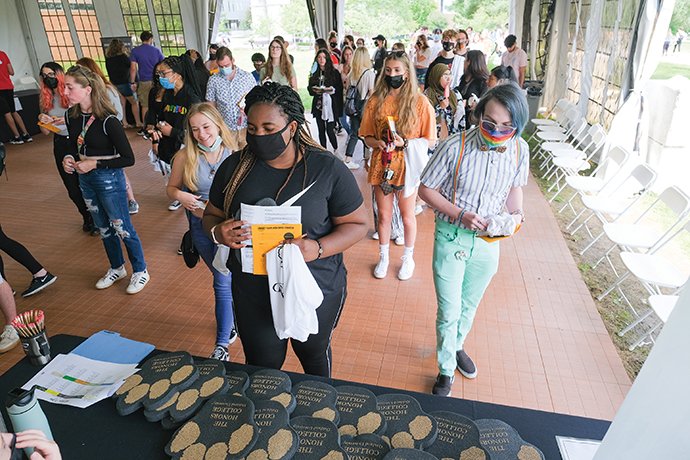 |
Let’s give them something to talk about
“They’ll be talking about our masks,” says Dwyer, who kindly sewed 200 fabric masks to pass out to those needing one during the earliest days of COVID, when masks were in short supply.
As OU students have acclimated to alternating between class on-campus and through virtual technology, Dwyer finds humor in the ironic.
“I had one student on campus for one of my classes one semester, but it wasn’t until she was on Zoom in another semester that I was able to actually see her from the neck up,” she laughs, “So in some ways, virtual has been more personal.”
Dwyer has been able to find some positives with the masks.
“There may be a tendency to think of fashion as frivolous or superficial,” Dwyer says, “but we reveal so much, personally, with what we wear. The same is true for the masks we wear. One student came to class with a Detroit Lions mask, so we talked about how he was a fan. Others have worn rainbows on their masks or other things that convey their feelings or views.”
When OU gave out Grizzly masks to students, it reminded Dwyer of past times.
“It’s reminiscent of all the licensing of the 2000s,” she says. “That’s become a big thing during COVID — all the logos on masks.”
Despite all the trends through the decades, Dwyer sums up the fashion equalizer that’s here to stay, in a simple but refreshing way: “We’ve found what works, for all of us, in a pair of jeans and a t-shirt. That’s continuity. And we all enjoy the comfort in that.”
Explore more historical flashbacks in the University Archives and Special Collections.



 April 8, 2022
April 8, 2022 By Mary Gunderson-Switzer
By Mary Gunderson-Switzer








